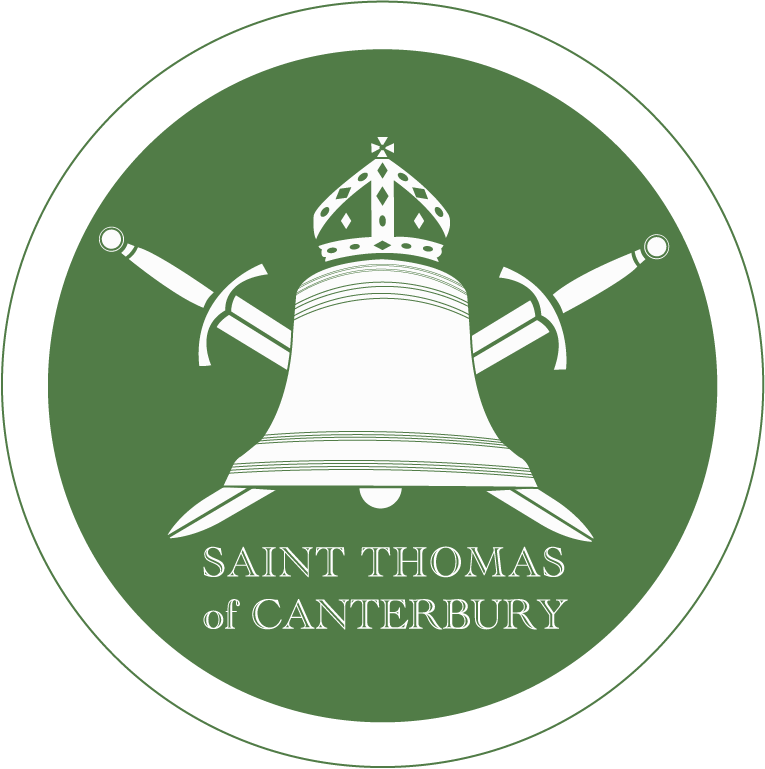History of the Organ of St. Thomas of Canterbury Episcopal Church
The Robert Noehren organ at St. Thomas of Canterbury Episcopal church is a unique instrument. No other organbuilder in the history of the American organ has possessed the musical skills required of a concert organist. Yet Robert Noehren, who was the university organist at the University of Michigan has probably collected more international honors than any other American organist. He played recitals throughout Europe and America and his recordings won him the French Grande Prix du Disque.
In the Early 1950’s, feeling frustrated with American organ builders who did not have the vision to create an organ possessing the sound that Dr. Noehren wanted to hear, he set out to build his first organ. That instrument was completed in 1955 and installed in the Lutheran Student Center at Ann Arbor, Michigan.
The St. Thomas Noehren organ was originally built for the New England Conservatory of Music in Boston, Massachusetts. It was completed in 1956 and installed at the Conservatory in 1957. This instrument, with its low wind pressures, flexible wind, and lightly “nicked” pipes caught the attention of the organ world. Organists found it to be an instrument capable of playing all of the literature written for the organ, from every period. The tone of its 2,057 pipes and 34 registers was clear and pure; the articulation superb. No other American builder was capable of this type of instrument during the late 1950’s.
In 1960 other American organ builders began to understand the vision that Robert Noehren, the organist turned organbuilder had and began building instruments very similar to the New England Conservatory instrument.
In 1978, the organ was removed from the New England Conservatory of Music in Boston. It was then rebuilt and installed with new pedal chests at McClung Recital Hall at the New Hampshire Conservatory of Music and the Arts in Winchester, NH. This work was carried out by John Wessel of Brattleboro, Vermont, who was born and trained in organ building in Holland. He appreciated the tonal design and fine pipework of this instrument and was careful not to destroy Dr. Noehren’s creation in the process of installing the organ in its new home. On November 3, 1978, Dr. Noehren performed a solo dedicatory recital on the Conservatory's newly installed instrument.
In 1980, this Recital Hall was slated for demolition and the Conservatory had no other home for the magnificent instrument on which so many well known organists had played and learned. The Organ Clearing House and Organ Historical Society were contacted in the hope of finding an appropriate home for Robert Noehren’s Opus 2.
In the Summer of 1981, St. Thomas of Canterbury Episcopal Church of Long Beach, California purchased this three manual and pedal 37 rank organ. It was carefully dismantled, brought to California and installed, replacing a electronic Baldwin organ. It is one of only two Robert Noehren Organs in California; and the only one in Southern California. The other is Noehren’s last and largest organ located in the First Unitarian Church of San Francisco.
Interestingly enough, Dr. Noehren chose to semi-retire in San Diego, California, and he served as recitalist at the organ's rededication on November 29, 1981. He died at age 91 in 2002.
The organ is now on its third console, a Schantz console purchased from Knight Organ Company, and extensively renovated under the direction of Manuel Rosales. It is believed to have originally come from St. Timothy’s RC Church in West Los Angeles. Installation of the rebuilt console was completed by July, 2020, and it was first used for in-person services in April 2021.
The organ continues to garner interest in the organ world in its current home and has been visited by many world class concert organists. It is certainly an instrument of historical significance worthy of being preserved for future generations.
